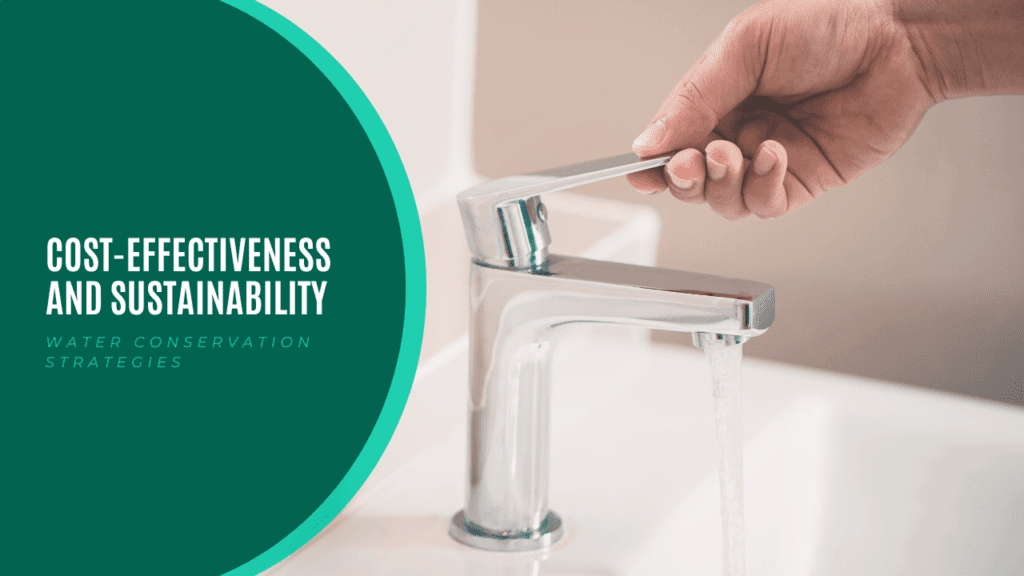
Landlords in Los Angeles face the dual challenge of managing costs while promoting sustainability in one of the most drought-prone regions in the United States. That comes with a lot of responsibility, and we’re here to talk about how to manage it.
In Los Angeles, water resources can be surprisingly scarce, especially during periods of drought. California has struggled with water supply issues more than usual over the last few years, and that’s led to restrictions on how and when water is used in population-dense cities like Los Angeles.
There’s also the growing demand for eco-friendly housing among renters. Tenants are looking for rental properties that offer energy-efficient appliances and systems. They don’t want to see a lot of wasted resources, and they don’t want sky-high electric and water bills.
By showing more respect for water conservation, you’ll attract quality tenants who are interested in leading a greener lifestyle.
The Importance of Water Conservation for LA Landlords
Water conservation isn’t just about adhering to regulations during periods of enforced water restrictions. It’s also an important measure that you can take to lead to substantial savings on utility bills and maintenance costs.
When you’re willing to implement water-saving strategies, you can contribute to the city’s resilience and the state’s environmental and economic health in drought and water scarcity. Additionally, taking steps towards sustainability can potentially increase the rental value and enhance a property’s appeal to eco-conscious tenants. This needs to be a priority for rental property owners, especially those who are thinking about the future and their investment plans in the long term.
Practical Water-Saving Tips for Landlords
What can you do at your rental property to ensure that water is conserved and respected? We have a few ideas that we have seen work in the Los Angeles properties we manage:
1. Install Low-Flow Plumbing Fixtures
- Faucets and Showerheads. Replacing existing fixtures with EPA-certified low-flow models will help you reduce water usage without impacting water pressure. Take an inventory of what you’re currently using in your bathrooms and your kitchen sinks, they might be outdated fixtures that are using more water than necessary.
- Toilets. Older toilets use as much as seven gallons of water for every flush. Newer models that are designed to conserve water are only using around two or three gallons per flush. Consider high-efficiency toilets, which use significantly less water per flush compared to older models. You’d be surprised at the difference this can make.
2. Upgrade to Drought-Resistant Landscaping
- Xeriscaping. Transition your property’s landscaping to include native plants that require minimal water, reducing the need for irrigation. This might hurt if you pride yourself on maintaining a green, lush lawn, but think about whether that’s important to tenants. When you’re renting your home, residents are looking for attractive but low-maintenance landscaping. Xeriscaping will not only provide that low-maintenance look but also use less water when it comes to keeping the outdoor space healthy.
- Mulching. Apply mulch around plants to help retain soil moisture and decrease water evaporation. This can also prevent weeds and provide a neat, clean look to your flower beds, bushes, and shrubs.
3. Implement Rainwater Harvesting Systems
People all over the city have begun doing this, and then the reclaimed water is used for landscaping and non-potable functions, cutting down on tap water usage. It’s making good use of the naturally available resources, and saving water for economic and environmental purposes. There are many creative ways to use rainwater and keep the taps and faucets turned off. You can capture rainwater from rooftops, for example, and direct it to storage containers.
4. Conduct Regular Maintenance Checks
- Leaks. A single dripping faucet can waste a significant amount of water over time. It’s also likely that your one slow drip will eventually turn into a plumbing disaster, costing more and causing additional frustration. Conduct routine inspections for leaks and repair them promptly.
- Irrigation Systems. Check for overwatering and ensure that the timing and zoning of irrigation systems are optimized for efficiency. Make this a part of your seasonal and preventative maintenance schedule.
5. Educate your tenants
Provide information and resources to tenants regarding water-saving habits, such as turning off the tap while brushing teeth or only running dishwashers and washing machines with full loads. You may want to educate your tenants about water conservation, because even with the techniques and the systems you install, saving water comes down to behavior.
It’s also a good time to evaluate how you’re working with utilities in your Los Angeles rental property. By having separate water meters for each unit, tenants are responsible for their water usage, naturally leading to more mindful consumption. This can help with conservation, so consider switching to individual meters if you’re simply paying the water bill for an entire building.
6. Utilizing Incentives and Rebates
The City of Los Angeles offers various incentive programs and rebates that encourage landlords to invest in water conservation measures. These can include rebates for high-efficiency appliances, landscaping alternatives, and even rain barrels. Be sure to research and take advantage of these opportunities to offset the initial costs of installing water-efficient systems.
Adopting water-saving techniques is beneficial for rental property owners and Los Angeles real estate investors as well as local tenants and the environment. It is an investment in the property that pays dividends in the form of lower utility bills, enhanced property appeal, and a positive contribution to the city’s sustainability efforts.
For landlords in Los Angeles, incorporating water conservation strategies is a commitment to future-proofing their properties against drought and water scarcity. By taking the steps that we have carefully outlined above, property owners can achieve cost savings, attract environmentally responsible tenants, and play a part in preserving the precious resource that is water.
 Let’s talk about what might work best for your property when it comes to saving water. We love staying ahead of trends and bringing new ideas to the owners and investors we work with.
Let’s talk about what might work best for your property when it comes to saving water. We love staying ahead of trends and bringing new ideas to the owners and investors we work with.
Contact us at Earnest Homes for this and all of your LA property management needs.
